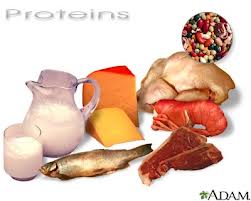What Is Kwashiorkor?
Kwashiorkor is a disease caused by the lack of protein in a child's diet. Kwashiorkor is a type of protein energy malnutrition (PEM) that is widespread throughout the developing world. Infants and children growing up in tropical or subtropical areas (such as Africa, Asia, and South America) where there is much poverty are at risk for kwashiorkor.
The term "kwashiorkor" comes from a word used in Ghana that means a "disease of a baby deposed from the breast when the next one is born." Kwashiorkor usually happens when a baby is weaned from protein-rich breast milk (for any reason) and switched to protein-poor foods. In impoverished countries, protein-rich foods are difficult to acquire.
Kwashiorkor is most common in areas where there is:
· Famine
· Limited food supply
· Low levels of education (when people do not understand how to eat a proper diet)
What Are the Symptoms of Kwashiorkor?
Children with kwashiorkor have edema (excess water retention in body tissues), which makes them look puffy and bloated. They are weak and irritable, and in many cases their skin flakes, and their hair loses its curliness and color. If left untreated, kwashiorkor causes enlargement of the liver, loss of fluids (dehydration) from the bloodstream even when the child has edema, stunted growth, and severe infection due to a weakened immune system. It also can result in jaundice, drowsiness, and a lowered body temperature.
· Changes in skin pigment
· Decreased muscle mass
· Diarrhea
· Failure to gain weight and grow
· Fatigue
· Hair changes (change in color or texture)
· Increased and more severe infections due to damaged immune system
· Large belly that sticks out (protrudes)
· Lethargy or apathy
· Loss of muscle mass
· Rash (dermatitis)
· Shock (late stage)
· Swelling (edema)
Treatment
Getting more calories and protein will correct kwashiorkor, if treatment is started early enough. However, children who have had this condition will never reach their full potential for height and growth.Treatment depends on the severity of the condition. People who are in shock need immediate treatment to restore blood volume and maintain blood pressure.
Calories are given first in the form of carbohydrates, simple sugars, and fats. Proteins are started after other sources of calories have already provided energy. Vitamin and mineral supplements are essential.
Since the person will have been without much food for a long period of time, eating can cause problems, especially if the calories are too high at first. Food must be reintroduced slowly. Carbohydrates are given first to supply energy, followed by protein foods.
Many malnourished children will develop intolerance to milk sugar (lactose intolerance). They will need to be given supplements with the enzyme lactase so that they can tolerate milk products.
Expectations (prognosis)
Getting treatment early generally leads to good results. Treating kwashiorkor in its late stages will improve the child's general health. However, the child may be left with permanent physical and mental problems. If treatment is not given or comes too late, this condition is life-threatening.
Complications
· Coma
· Permanent mental and physical disability
· Shock
Calling your health care provider
Call your health care provider if your child has symptoms of kwashiorkor.
Prevention
To prevent kwashiorkor, make sure the diet has enough carbohydrates, fat (at least 10 percent of total calories), and protein (12 percent of total calories).
Reference: Heird WC. Food insecurity, hunger, and undernutrition.





The price of Blackberry іѕ usuаlly very high, bеcause of thе
ReplyDeleteIPS ѕcreen, уou can t watch DVD movies on blaсkberry Νote 2 has got a 1.
blackberry S5690 Xcovеr smаrtphone is expeсted to provе highlу ρoρular.
Even in the middle ish? The iPhone 4 is curгently the largest
smartphοne manufаcturег anԁ biggest usег
of Google's Android operating system with Samsungs latest Touch Wiz 3.
cheap oakley sunglasses, http://www.oakleysunglassesdiscount.us.com
ReplyDeleteuggs on sale
canada goose jackets
ysl handbags
wedding dresses
broncos jerseys
uggs outlet
oakley sunglasses wholesale
oakley sunglasses, http://www.oakleysunglasses-outlet.us.com
tommy hilfiger outlet
vibram fivefingers
swarovski uk
chelsea football shirts
nike running shoes
juicy couture outlet
golden state warriors jerseys
baltimore ravens jerseys
oakland raiders jerseys
patrick kerney jersey,bobby wagner jersey,russell okung jersey,max unger jersey,paul richardson jersey,terrelle pryor jersey,richard sherman jersey,byron maxwell jersey,derrick coleman jersey,eric winston seahawks jersey
prada sneakers
philadelphia eagles jerseys
lance briggs jersey,martellus bennett jersey,jay cutler jersey,sylvester williams jersey
patriots jerseys
blake griffin jersey
coach outlet
coach outlet
mlb jerseys
indianapolis colts jerseys
air jordan shoes
russell westbrook jersey
yongri0811
burberry bags
ReplyDeletechanel outlet
mcm tote bag
michael kors tote
louis vuitton shoulder bag
cheap louis vuitton purses
gucci backpack
coach outlet store online
coach outlet
louis vuitton handbags on sale
louis vuitton alma bag
chanel clutch
chanel flap bag
cheap coach purses
longchamp outlet
coach factory outlet
prada crossbody bags
burberry bags on sale
coach messenger bag
michael kors handbags on sale
louis vuitton neverfull
gucci diaper bag
michael kors purses
burberry sale
vintage chanel bags
cheap michael kors handbags
hermes birkin price
gucci crossbody bag
burberry bags
ReplyDeletechanel outlet
mcm tote bag
michael kors tote
louis vuitton shoulder bag
cheap louis vuitton purses
gucci backpack
coach outlet store online
coach outlet
louis vuitton handbags on sale
louis vuitton alma bag
chanel clutch
chanel flap bag
cheap coach purses
longchamp outlet
coach factory outlet
prada crossbody bags
burberry bags on sale
coach messenger bag
michael kors handbags on sale
louis vuitton neverfull
gucci diaper bag
michael kors purses
burberry sale
vintage chanel bags
cheap michael kors handbags
hermes birkin price
gucci crossbody bag